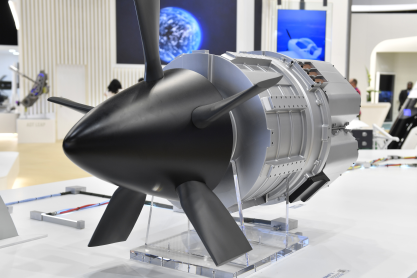
Safran’s ENGINeUS XL is a 500- 1,000-kW liquid-cooled electric engine aimed at regional aircraft.
Credit: Mark Wagner
Safran plans to begin certification testing on its ENGINeUS 100 electric engine in July, with flight tests expected to begin around the same time. The French aerospace company anticipates European certification in the first quarter of 2024 and wants to be the first to certify an electric engine for...
Subscription Required
This content requires a subscription to one of the Aviation Week Intelligence Network (AWIN) bundles.
Schedule a demo today to find out how you can access this content and similar content related to your area of the global aviation industry.
Already an AWIN subscriber? Login
Did you know? Aviation Week has won top honors multiple times in the Jesse H. Neal National Business Journalism Awards, the business-to-business media equivalent of the Pulitzer Prizes.
